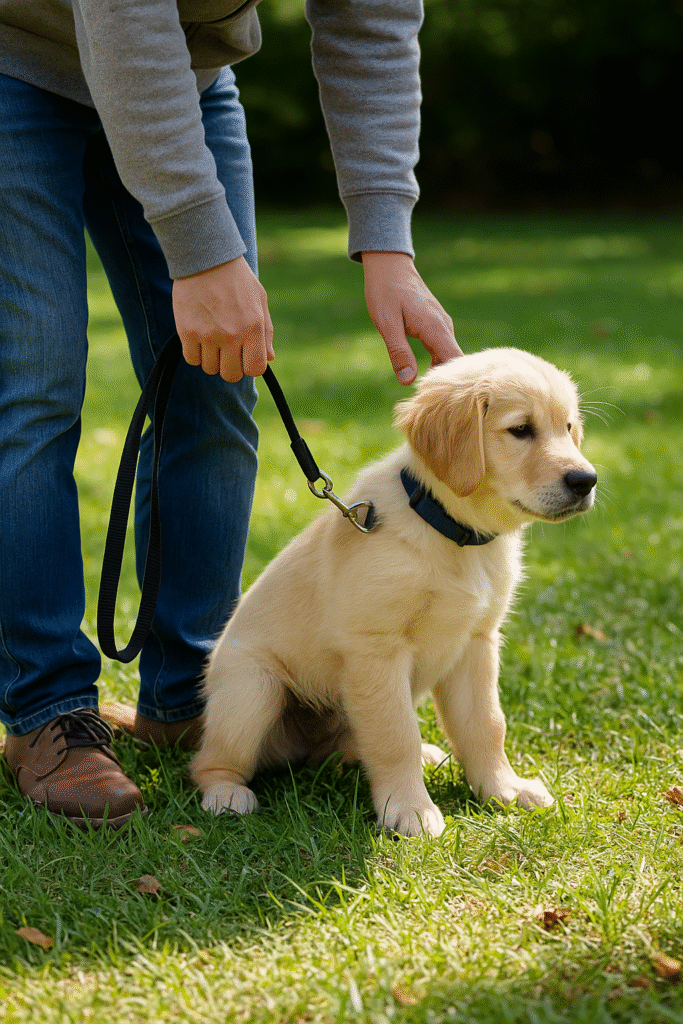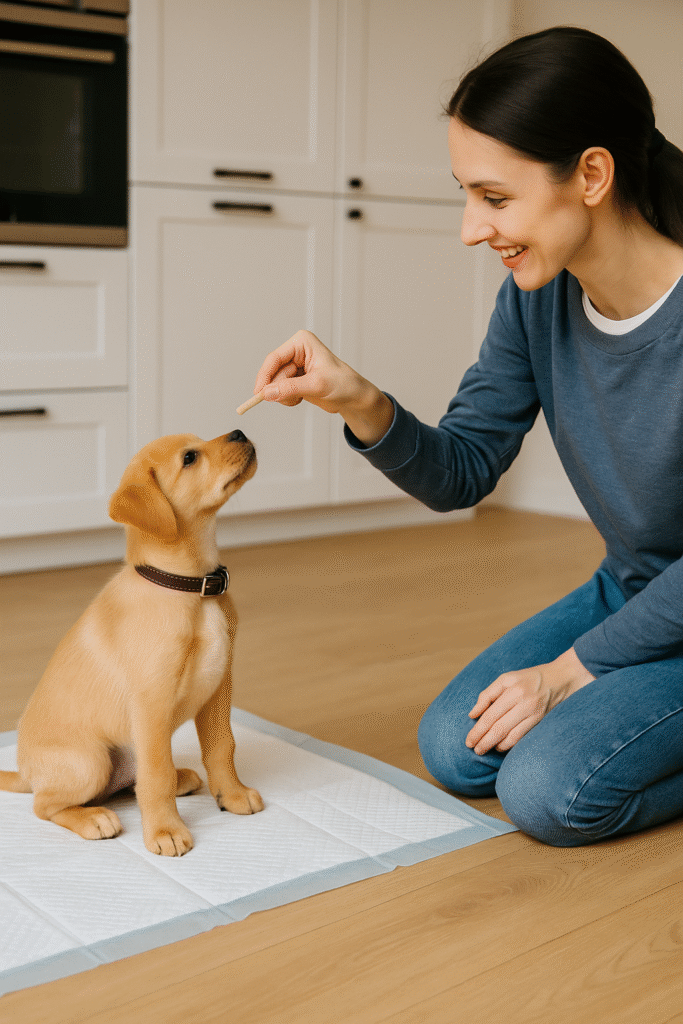House Training Puppies: A Kind, Step-by-Step Guide
House training is one of the first and most important skills your puppy will learn. Done well, it strengthens trust, reduces stress for everyone, and prevents bad habits from taking root. This guide gives you a humane, repeatable process that works for most households—including apartments—using schedules, supervision, and positive reinforcement.
What House Training Really Means
House training isn’t about “punishing accidents.” It’s about teaching timing and place. Your puppy learns that going in the right spot (outdoors, pad, or designated area) always pays, and going elsewhere never pays. The faster you control timing and access, the faster your puppy understands the rules.
Core Principles (Memorize These)
- Timing: Puppies need to go after waking, after eating/drinking, after play, and every 1–3 hours depending on age.
- Supervision: If eyes aren’t on the puppy, they’re in a safe space (crate, x-pen, or tether). No unsupervised freedom early on.
- Right-place = Rewards: Mark (“Yes!”) the instant they finish in the correct spot; reward with a tiny treat and praise.
- 벌을 주지 마세요: 놀래키거나 꾸중하는 것은 학습을 지연시키고 자신감을 손상시킵니다. 다음에는 청소하고, 다시 정리하고, 더 잘 관리하세요.

Supplies Checklist
- Crate sized so the puppy can stand up, turn, and lie down (no extra “bathroom corner”).
- Leash, poop bags, enzymatic cleaner (to remove odor fully), and high-value pea-sized treats.
- For apartments: quality pee pads or a balcony grass tray as an interim target.
Potty Frequency by Age (Guideline)
- 8–10 weeks: every 60–90 minutes while awake.
- 11–14 weeks: every 90–120 minutes.
- 15–20 weeks: every 2–3 hours.
- Night: many puppies need 1–2 bathroom breaks until ~14–16 weeks.
The 7-Day Starter Plan
Days 1–2: Pattern Building
- On wake-up, carry the puppy to the potty spot. Stand still. Quietly wait. The instant they finish, mark “Yes!” and treat.
- Set a timer to take them again after eating/drinking, after play, and on the age-based schedule above.
- Indoors: tether to you, keep in an x-pen, or use the crate between outings so mistakes can’t happen out of sight.
Days 3–4: Add a Cue & Surface Preference
- As they start to squat outside, softly add a cue like “Go potty.” Do not repeat; let the environment signal the behavior.
- Always use the same surface (grass, gravel, pad) to build a strong location association.
Days 5–7: Stretch Time & Fade Treats
- Gradually increase the interval between outings by 10–15 minutes if they remain accident-free.
- Begin to treat intermittently (every second success), but keep verbal praise every time.
Crate Training That Helps House Training
- Make it inviting: Feed meals at the crate entrance, then inside; place a safe chew toy. Door open at first.
- Short sessions: Close the door for 1–3 minutes while you sit nearby, then release and reward calm behavior.
- Increase gradually: Add time in small steps. If whining starts, wait for 2–3 seconds of quiet before opening so you don’t reward noise.
Crates tap into a puppy’s den instinct and support bladder control—as long as you follow the outing schedule and never use the crate for punishment.
Reading Your Puppy’s Signals
- Circling, sniffing floors, suddenly going quiet, heading toward the door, or wandering away from play = take them out now.
- 활발하게 놀거나 줌미를 한 후에는 5~10분 이내에 화장실에 가야 합니다.

What to Do During Accidents
- If you catch them in the act: Calmly scoop or guide to the potty spot—no scolding. Reward if they finish there.
- If you find a puddle later: Your window to teach is gone. Clean thoroughly with enzymatic cleaner and tighten supervision/schedule.
Apartment & Night Strategies
- Pad-to-outdoor bridge: Put the pad near the exit, then on the balcony/grass tray, then fade the pad as outdoor success increases.
- Night routine: Last water 2–3 hours before bed; last potty right before lights out. Set one alarm for a brief night break during the first weeks.
Weather, Surfaces & “Stubborn” Puppies
Hesitation in rain, snow, or on cold grass is common. Bring a large umbrella, clear a small patch, or use a temporary pad/grass tray outside the door to generalize quickly. Reward generously for braving new surfaces and conditions.
Common Mistakes (and Fixes)
- Too much freedom too soon: Gate rooms; expand access only after a full week accident-free.
- Inconsistent timing: Use phone alarms; stick to post-sleep, post-meal, post-play rules.
- Scolding: Increases hiding and anxiety. Manage better; reward right-place behavior.
When to Call the Vet
Frequent accidents after weeks of solid training, straining, blood in urine/stool, or sudden increased thirst/urination warrant a veterinary check to rule out medical causes like UTIs or GI upsets.
Related Reading
With structure, patience, and well-timed rewards, most puppies become reliably house trained in just a few weeks—and your bond grows stronger every day.


핑백: How to Crate Train a Rescue Dog: Step-by-Step Guide for Success
핑백: Boston Terrier Care Guide: The Lively Little Gentleman With a Big Heart